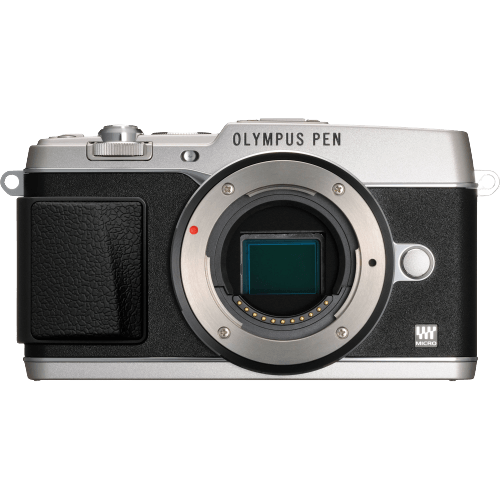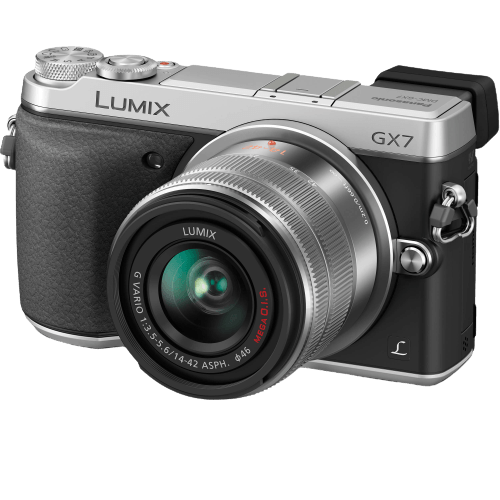Olympus PEN E-P5 vs Panasonic Lumix DMC-GX7 Comparison
Olympus PEN E-P5

Panasonic Lumix DMC-GX7

The Olympus PEN E-P5 edges out the Panasonic Lumix DMC-GX7 with a score of 53 to 52. Both cameras are mirrorless, announced in 2013, and similarly priced at $1000 for the E-P5 and $999 for the GX7. They share some common specifications, but each has its advantages.
The E-P5 is slightly lighter, weighing 420g compared to the GX7’s 402g. It also has a more compact design, measuring 122 x 69 x 37mm, while the GX7 measures 123 x 71 x 55mm. These differences make the E-P5 more portable and convenient for on-the-go photography.
On the other hand, the GX7 has its merits, too. Though it’s a bit larger and heavier, the difference is minimal and may not impact users significantly. As the scores suggest, both cameras offer a similar level of performance and quality.
Ultimately, the choice between the Olympus PEN E-P5 and Panasonic Lumix DMC-GX7 depends on individual preferences and specific needs. While the E-P5 takes the lead in terms of portability, the GX7 holds its ground with comparable performance.
Olympus PEN E-P5 vs Panasonic Lumix DMC-GX7 Overview and Optics
The Olympus PEN E-P5 takes a slight lead in our comparison with a score of 55/100 for optics, while the Panasonic Lumix DMC-GX7 trails closely behind at 54/100. Both cameras share several common specifications, such as 16 and 16.1 megapixels, CMOS sensor type, Micro Four Thirds sensor size, Micro 4/3 lens mount, and image stabilization.
The E-P5 outperforms the GX7 in a few key areas. It boasts a faster shooting speed of 9 frames per second compared to the GX7’s 5 frames per second, allowing for better capture of fast-moving subjects. Additionally, the E-P5’s TruePic VI processor contributes to improved image quality and processing speed over the GX7’s Venus Engine. The E-P5 also has a slightly higher DXOMARK score for the sensor at 72, compared to the GX7’s score of 70, indicating better overall image quality.
On the other hand, the Panasonic Lumix DMC-GX7 still holds its own in this comparison. Though it has a marginally lower megapixel count at 16 compared to the E-P5’s 16.1, this difference is negligible and unlikely to impact the final image quality significantly. Both cameras also feature image stabilization, ensuring steady shots in various shooting conditions.
Taking these factors into account, the Olympus PEN E-P5 comes out as the better camera in terms of optics due to its faster shooting speed, superior processor, and marginally higher sensor score. However, the Panasonic Lumix DMC-GX7 remains a viable contender, especially for those who prioritize other features or find it more suitable for their specific needs.
Olympus PEN E-P5 vs Panasonic Lumix DMC-GX7 Video Performance
The Olympus PEN E-P5 emerges as the winner in video capabilities with a score of 57/100, while the Panasonic Lumix DMC-GX7 trails closely behind with a score of 56/100. Both cameras share similarities in their video specifications, such as having Full HD video resolution and maximum video dimensions of 1920 x 1080.
The Olympus PEN E-P5 outperforms the Panasonic Lumix DMC-GX7 in a few aspects. One significant advantage is the built-in time-lapse functionality, which allows the user to create stunning time-lapse videos without the need for additional software or equipment. This feature is not present in the Panasonic Lumix DMC-GX7, making the Olympus PEN E-P5 a more versatile option for videographers.
On the other hand, the Panasonic Lumix DMC-GX7 has its own strength when it comes to video capabilities. It boasts a maximum video frame rate of 60fps, which is double that of the Olympus PEN E-P5’s 30fps. This higher frame rate allows for smoother video playback and better slow-motion effects, giving the Panasonic Lumix DMC-GX7 an edge in capturing fast-moving subjects and action scenes.
Taking all these factors into account, it is clear that both cameras have their merits when it comes to video performance. The Olympus PEN E-P5 offers the convenience of built-in time-lapse functionality, making it a great choice for those who enjoy creating time-lapse videos. Meanwhile, the Panasonic Lumix DMC-GX7’s higher frame rate provides an advantage for capturing fast-paced action, making it a suitable option for videographers who prioritize smooth video playback.
Olympus PEN E-P5 vs Panasonic Lumix DMC-GX7 Features and Benefits
The Olympus PEN E-P5 and the Panasonic Lumix DMC-GX7 both have a feature score of 57 out of 100, making it a tie in terms of their overall feature specifications. They share several common specifications, including a 3-inch screen size, touchscreen capabilities, the absence of GPS, and the presence of WIFI. However, neither camera has Bluetooth capabilities.
The Panasonic Lumix DMC-GX7 has a slight advantage in screen resolution, with 1,040,000 dots compared to the Olympus PEN E-P5’s 1,036,800 dots. This means the Lumix DMC-GX7 provides a marginally clearer and sharper display for users. Furthermore, the Lumix DMC-GX7 has a flip screen, which the Olympus PEN E-P5 lacks. This additional feature allows for more flexible shooting angles and is especially useful for capturing images from low or high angles.
On the other hand, the Olympus PEN E-P5 does not offer any significant advantages over the Panasonic Lumix DMC-GX7. Both cameras have the same feature score and share most specifications. The only difference in their features is the slightly lower screen resolution and the absence of a flip screen in the PEN E-P5.
Considering the similarities between these two cameras and their equal feature scores, it is difficult to declare a clear winner. However, the Panasonic Lumix DMC-GX7’s slightly higher screen resolution and the presence of a flip screen make it a better option for those seeking more flexibility in their photography. The Olympus PEN E-P5, while still a solid choice, does not offer any significant advantages over the Lumix DMC-GX7.
Olympus PEN E-P5 vs Panasonic Lumix DMC-GX7 Storage and Battery
The Olympus PEN E-P5 and Panasonic Lumix DMC-GX7 share the same storage and battery score of 21/100. Both cameras have one memory card slot, accepting SD, SDHC, and SDXC cards. Neither camera offers USB charging.
The Panasonic Lumix DMC-GX7 holds a slight advantage in battery life, providing 350 shots per charge compared to the Olympus PEN E-P5’s 330 shots. The DMC-GX7 uses a Li-Ion 7.2V 1200 mAh battery, while the E-P5 uses a BLN-2 battery.
On the other hand, the Olympus PEN E-P5 does not have any distinct advantages in storage and battery over the Panasonic Lumix DMC-GX7. Both cameras perform similarly in these aspects.
Considering the storage and battery aspects, the Panasonic Lumix DMC-GX7 is a marginally better choice due to its longer battery life. However, the overall difference between the two cameras in this area is minimal, and other factors should be considered when making a final decision.
Olympus PEN E-P5 vs Panasonic Lumix DMC-GX7 – Our Verdict
Are you still undecided about which camera is right for you? Have a look at these popular comparisons that feature the Olympus PEN E-P5 or the Panasonic Lumix DMC-GX7:

